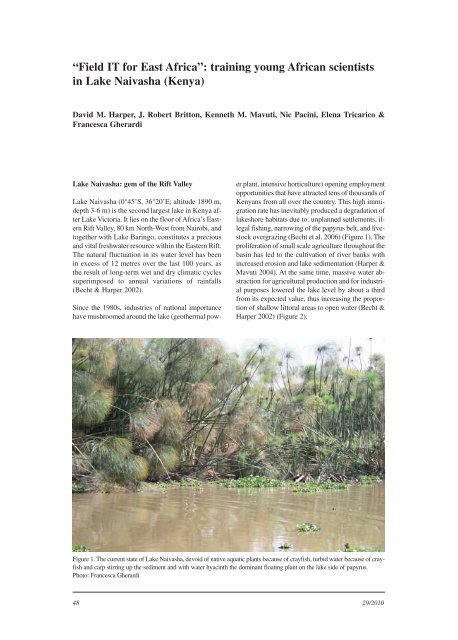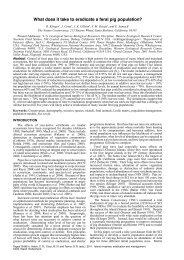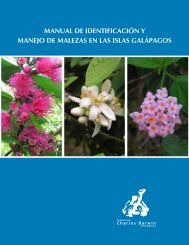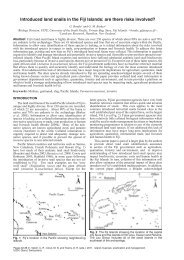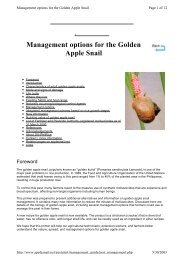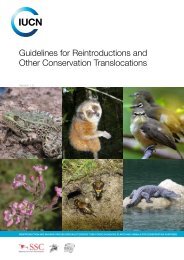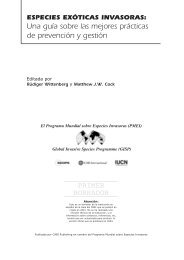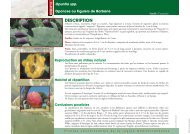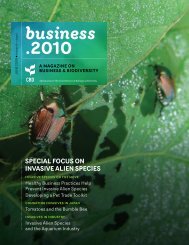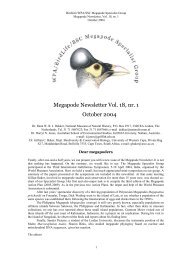Aliens Newsletter - ISSG
Aliens Newsletter - ISSG
Aliens Newsletter - ISSG
Create successful ePaper yourself
Turn your PDF publications into a flip-book with our unique Google optimized e-Paper software.
“Field IT for East Africa”: training young African scientists<br />
in Lake Naivasha (Kenya)<br />
David M. Harper, J. Robert Britton, Kenneth M. Mavuti, Nic Pacini, Elena Tricarico &<br />
Francesca Gherardi<br />
Lake Naivasha: gem of the Rift Valley<br />
Lake Naivasha (0°45’S, 36°20’E; altitude 1890 m,<br />
depth 3-6 m) is the second largest lake in Kenya after<br />
Lake Victoria. It lies on the floor of Africa’s Eastern<br />
Rift Valley, 80 km North-West from Nairobi, and<br />
together with Lake Baringo, constitutes a precious<br />
and vital freshwater resource within the Eastern Rift.<br />
The natural fluctuation in its water level has been<br />
in excess of 12 metres over the last 100 years, as<br />
the result of long-term wet and dry climatic cycles<br />
superimposed to annual variations of rainfalls<br />
(Becht & Harper 2002).<br />
Since the 1980s, industries of national importance<br />
have mushroomed around the lake (geothermal pow-<br />
er plant, intensive horticulture) opening employment<br />
opportunities that have attracted tens of thousands of<br />
Kenyans from all over the country. This high immigration<br />
rate has inevitably produced a degradation of<br />
lakeshore habitats due to: unplanned settlements, illegal<br />
fishing, narrowing of the papyrus belt, and livestock<br />
overgrazing (Becht et al. 2006) (Figure 1). The<br />
proliferation of small scale agriculture throughout the<br />
basin has led to the cultivation of river banks with<br />
increased erosion and lake sedimentation (Harper &<br />
Mavuti 2004). At the same time, massive water abstraction<br />
for agricultural production and for industrial<br />
purposes lowered the lake level by about a third<br />
from its expected value, thus increasing the proportion<br />
of shallow littoral areas to open water (Becht &<br />
Harper 2002) (Figure 2).<br />
Figure 1. The current state of Lake Naivasha, devoid of native aquatic plants because of crayfish, turbid water because of crayfish<br />
and carp stirring up the sediment and with water hyacinth the dominant floating plant on the lake side of papyrus.<br />
Photo: Francesca Gherardi<br />
48 29/2010


